Eric Marson Awards 2023
The judge this year was Graham Matthews, and he decided that the following entries from members of the Quekett and the Postal Microscopical Society should be awarded certificates:
- Nigel Ashby (Sand from Dornoch Beach)
- Gordon Brown (set of slides)
- John Gregory Killer shrimp (Dikerogammarus villosus)
- Pam Hamer (Evaporated Water Extract)
- Michael Horwood (Giant Asiatic Atlas Moth)
- Peter Langford (set of slides)
- John Rhodes (Foram Roundabout)
Quekett members can see larger photographs and photomicrographs of the entries, and the judge’s comments, in the Slide showcase in the password-protected Members’ area.
Nigel Ashby
Sand from Dornoch Beach. This is the first slide I have ever mounted and ringed!
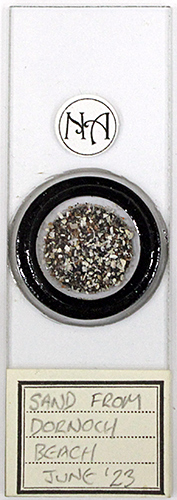 Nigel Ashby’s slide of sand from Dornoch Beach
Nigel Ashby’s slide of sand from Dornoch Beach
Gordon Brown
All specimens unprocessed before sectioning on Reichert sliding microtome. Specimens held between blocks of foam insulation material, then stained, dehydrated, cleared and mounted all whilst on the slide. Approximately 20 minutes from cutting section to completed slide. All sections 30µm stained with Wacker 3A Sim and mounted in LOCA 2500. Yew stem T.S. (Taxus baccata), sycamore petiole T.S. (Acer pseudoplatanus) and walnut petiole T.S. (Juglans regia)
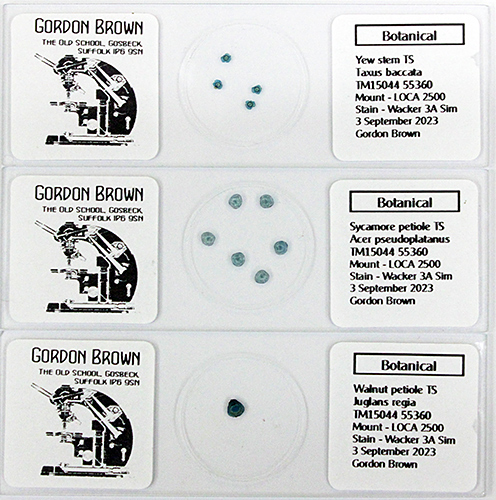 Gordon Brown’s slides of plant sections
Gordon Brown’s slides of plant sections
John Gregory
Apple gall wasp (Biorhiza pallida) male, mounted in LOCA. Killer shrimp (Dikerogammarus villosus) mounted in LOCA. Feather mite (Analges sp.) from sparrow (Passer domesticus), mounted in Numount.
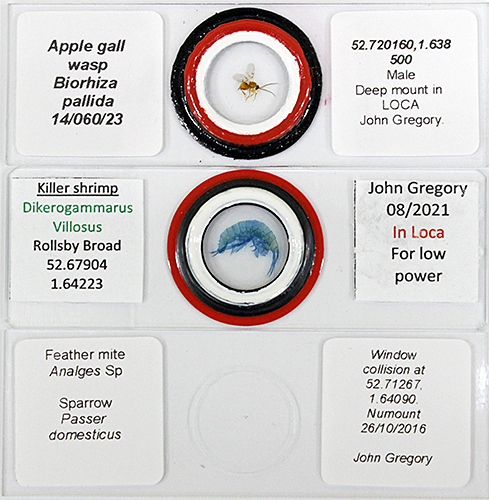 John Gregory’s slides
John Gregory’s slides
Pam Hamer
The stone recovered from a beach on the Isle of Wight is, I believe, a Copperas ore. It is from beds which outcrop on the Dorset coast and was originally collected and used as a dye mordant. It has high concentrations of iron and sulphur in a mudstone and contains pyritised fossil stems. When exposed to air and in wet and dry atmospheres it decomposes and small pieces of the fossil stems from the Eocene are visible. However, other components in the rock form acidic material and the fossils gradually decompose. To try and preserve some fossils I impregnated one with glass glue which I hoped would protect it (slide 1). I used less glue for the second sample and slide 2 shows the crystal growth which eventually breaks down the fossils.
Slide 1 IoW stone: fossil stem impregnated with glass glue, Slide 2 IoW stone: fossil stem showing crystal growth, Slide 3: dried aqueous extract of decomposed IoW stone.
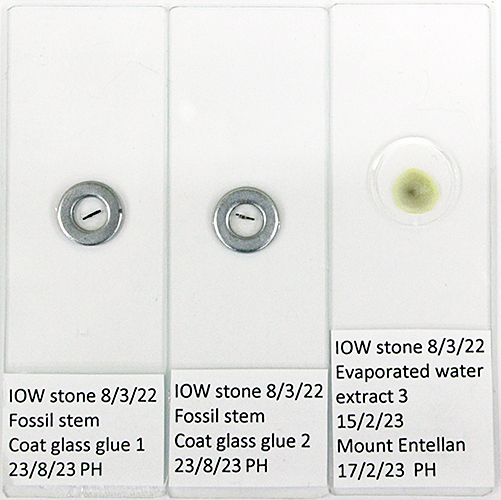 Pam Hamer’s slides
Pam Hamer’s slides
Michael Horwood
Species of Lepidoptera are becoming extinct. I do not kill butterflies or moths. Most all of the specimens you see here come from vintage displays from eBay. Most of these are in very poor condition, bodies gone and wings damaged. I was hoping that mounting wings in slides will give extended longevity. One in the collection has not been seen since 1910. The slides are kept in sample boxes in the dark.
Global warming is affecting an advanced extinction rate of many insects. The extensive building programmes and over-population is going to advance our problems with very little chance of reprieve. With specific habitats in vast decline what chance for life is left? There are lots of other effects… so I could be wrong!
Slide 1 Neptis sappho, Slide 2 Giant Asiatic Atlas Moth, Slide 3 Chinese Emperor Moth Papilio bianor.
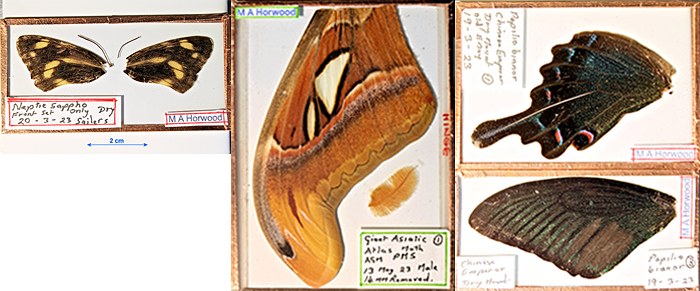 Michael Horwood’s slides of Lepidoptera wings
Michael Horwood’s slides of Lepidoptera wings
Peter Langford
Each slide with stain either Wacker 3A (0.25% Acriflavine/Acridine Red/Astra Blue) or Fast Green/Safranin.
Slide 1 T.S. Fig (Ficus carica), Slide 2 T.S. Raspberry (Rubus sp.), Slide 3 T.S. Maize (Zea mays).
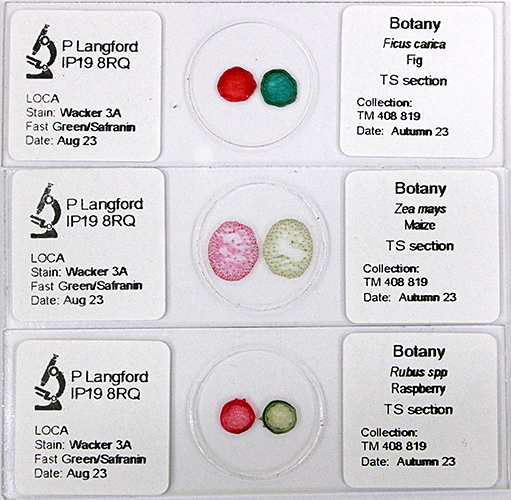 Peter Langford’s slides of plant sections
Peter Langford’s slides of plant sections
John Rhodes
Slide 1 Pollen from unfiltered oil-seed rape honey. The proportion of oil-seed rape pollen is well above the 45% relative % to be able to call this monofloral honey.
Slide 2 Foram Roundabout. T-Gauge 1:450 railway accessories, a foram in the centre of the roundabout. Dry mount secured with LOCA.
Slide 3 Pond Sample. Dried on hotplate and mounted in LOCA.
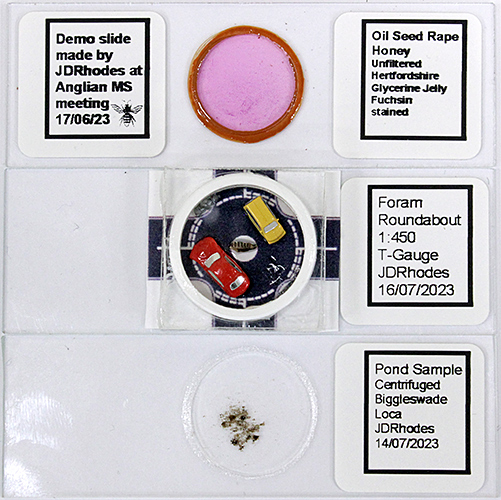 John Rhodes’ slides
John Rhodes’ slides

